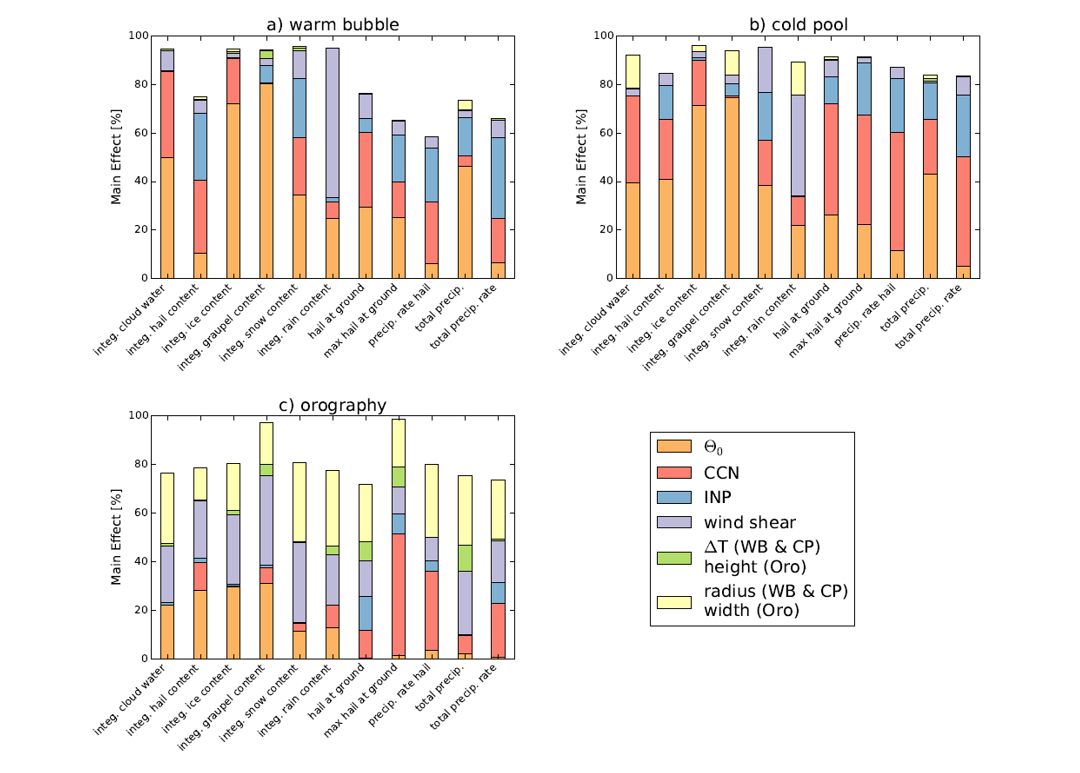Statistical emulation: An alternative approach for sensitivity analyses
| Figure: Bar plot of the relative impact of various parameters on the uncertainty of the prediction of vertically integrated hydrometeor masses and precipitation when (a) a warm bubble, (b) a cold pool, (c) a mountain ridge is used as trigger mechanism. |
Severe convective storms are frequently associated with heavy precipitation; strong wind gusts and hail often lead to serious damage to buildings, infrastructure and crops. Thus, the modeling and prediction of severe storms and deep convective clouds are key areas of interest in atmospheric research. It is also prerequisite to better understand how changes in the environmental conditions feed back into the dynamics and microphysics of deep convective clouds.
The rather new approach of statistical emulation is used here. This method replaces the costly model simulations with statistical descriptions of the relation between model input and model output which considerably reduces the computational cost. This study examines the impact of six parameters describing environmental conditions, such as cloud condensation nuclei (CCN) concentration and wind shear, on hailstorms and identifies sources of uncertainty in their prediction. Furthermore, it is investigated whether the sensitivities are robust for three different trigger mechanisms of convection.
The results show that the uncertainties of most cloud and precipitation outputs are dominated by the uncertainty in the temperature profile and the CCN concentration. For example, the uncertainty in the forecast of the maximum amount of surface hail could be reduced by up to 44% if the CCN concentration was known exactly. The temperature profile is also an important factor in determining the number concentration of surface hail where a high number of hailstones is connected to colder conditions.
Although the main contributors to the uncertainties are comparable for the three initiation mechanisms of convection, the contributions from the input parameters to the output uncertainties vary for the different trigger mechanisms. This means that sensitivities found for different convection triggers are not comparable.
Further information:
Wellmann, C., Barrett, A. I., Johnson, J. S., Kunz, M., Vogel, B., Carslaw, K. S., & Hoose, C. (2018). Using emulators to understand the sensitivity of deep convective clouds and hail to environmental conditions. Journal of Advances in Modeling Earth Systems, 10. https://doi.org/10.1029/2018MS001465
[Working group: Cloud Physics]

